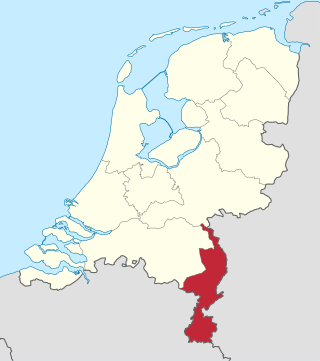
Limburg, also known as Dutch Limburg, is the southernmost of the twelve provinces of the Netherlands. It is bordered by Gelderland to the north and by North Brabant to its west. Its long eastern boundary forms the international border with the state of North Rhine-Westphalia in Germany. To the west is the international border with the similarly named Belgian province of Limburg, part of which is delineated by the river Meuse. To the South, Limburg is bordered by the Belgian province of Liège. The Vaalserberg is on the extreme southeastern point, marking the tripoint of the Netherlands, Germany and Belgium.

Tongeren is a city and municipality located in the Belgian province of Limburg, in the southeastern corner of the Flemish region of Belgium. Tongeren is the oldest town in Belgium, as the only Roman administrative capital within the country's borders. As a Roman city, it was inhabited by the Tungri, and known as Atuatuca Tungrorum, it was the administrative centre of the Civitas Tungrorum district.
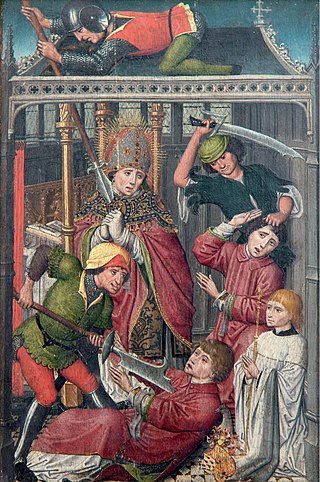
Lambert of Maastricht, commonly referred to as Saint Lambert, was the bishop of Maastricht-Liège (Tongeren) from about 670 until his death. Lambert denounced Pepin's liaison with his mistress or bigamous wife Alpaida, the mother of Charles Martel. The bishop was murdered during the political turmoil that developed when various families fought for influence as the Merovingian dynasty gave way to the Carolingians. He is considered a martyr for his defence of marriage. His feast day is September 17.
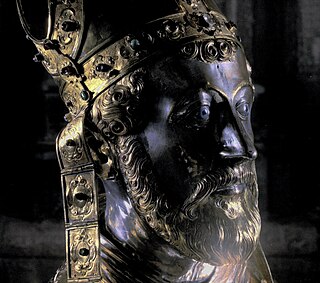
Saint Servatius was bishop of Tongeren. Servatius is patron saint of the city of Maastricht and the towns of Schijndel and Grimbergen. He is one of the Ice Saints. His feast day is May 13.
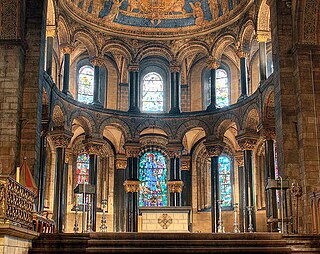
Mosan art is a regional style of art from the valley of the Meuse in present-day Belgium, the Netherlands, and Germany. Although in a broader sense the term applies to art from this region from all periods, it generally refers to Romanesque art, with Mosan Romanesque architecture, stone carving, metalwork, enamelling and manuscript illumination reaching a high level of development during the 11th, 12th and 13th centuries.

The Catholic Church in the Netherlands is part of the worldwide Catholic Church under the spiritual leadership of the Pope in Rome. Its primate is the Metropolitan Archbishop of Utrecht, since 2008 Willem Jacobus Eijk. In 2015 Catholicism was the single largest religion of the Netherlands, forming some 23% of the Dutch people, based on in-depth interviewing, down from 40% in the 1960s.

The Basilica of Saint Servatius is a Roman Catholic church dedicated to Saint Servatius, in the center of Maastricht, Netherlands. The architecturally hybrid but mainly Romanesque church is situated next to the Gothic Church of Saint John, backing onto the town's main square, Vrijthof.
Remaclus was a Benedictine missionary bishop who is venerated as a saint.

Gondulphof Maastricht, sometimes of Tongeren was a bishop of Tongeren-Maastricht venerated as a Roman Catholic and Eastern Orthodox saint. Together with Saint Servatius and Saint Monulph, he is one of the patron saints of the city of Maastricht.
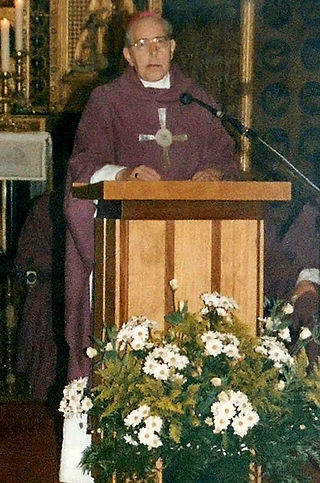
Joannes Baptist Matthijs Gijsen was a Dutch bishop of the Roman Catholic Church. After being Bishop (emeritus) of Roermond, Limburg, the Netherlands, he became Bishop (emeritus) of the Diocese of Reykjavík (Iceland). His episcopal motto was Parate viam Domini.
The Roman Catholic Diocese of Tongeren was an ancient bishopric of Belgium, now a Latin titular bishopric in present Belgium.
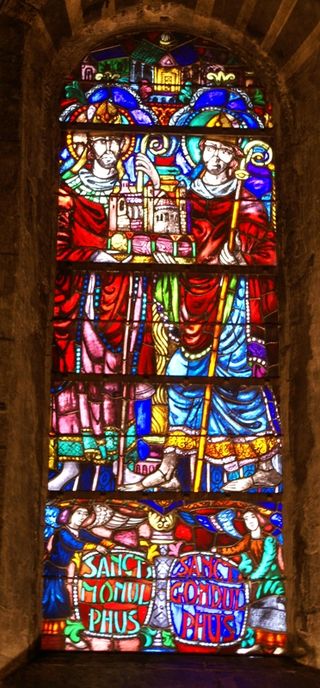
Monulph was a sixth-century bishop of Tongeren and Maastricht, and is revered as a Roman Catholic saint.

Theodard of Maastricht was a 7th-century bishop of Maastricht-Liège, in present-day Netherlands. As Theodard was murdered while on his way to protest the plundering of his diocese by Frankish nobles, he is considered a martyr. His feast day is 10 September. Theodard was uncle to his successor Lambert of Maastricht, and therefore brother or brother-in-law to Robert II, Lord Chancellor of France.
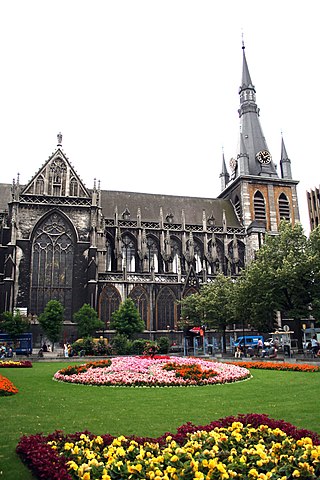
The Diocese of Liège is a Latin Church ecclesiastical territory or diocese of the Catholic Church in Belgium. The diocese was erected in the 4th century and presently covers the same territory as Belgium's Liège Province, but it was historically much larger. Currently, the diocese is a suffragan in the ecclesiastical province of the Archdiocese of Mechelen-Brussels. Its cathedra is found within St. Paul's Cathedral in the episcopal see of Liège.
St. Servatius' College is a boys' school located in Matara, Sri Lanka. The school was established in 1897 by recently arrived Belgian Jesuit missionaries, led by Joseph Van Reeth, first bishop of Galle and Father Augustus Standaert. St. Servatius' College is a national school, which provides primary and secondary education. This is the only school in Sri Lanka where three Governors of the Central Bank of Sri Lanka were educated. This is the only school in Sri Lanka that has produced national team captains in the sports of cricket, football and volleyball.
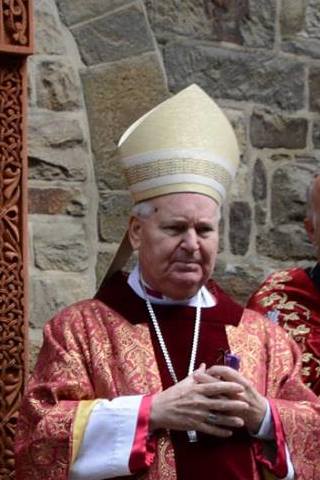
Franciscus Jozef Maria (Frans) Wiertz is a prelate of the Roman Catholic Church. He was bishop of Roermond from 1993 until 2017.

Everardus Johannes (Everard) de Jong is a Dutch prelate of the Roman Catholic Church. He is auxiliary bishop of Roermond since 1999.
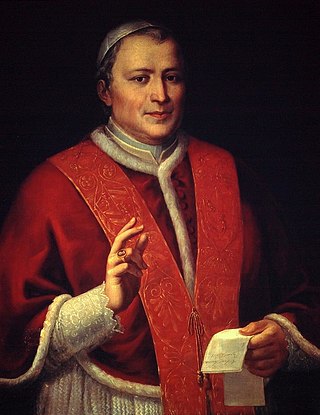
On 4 March 1853, Pope Pius IX restored the episcopal hierarchy in the Netherlands with the papal bull Ex qua die arcano, after the Dutch Constitutional Reform of 1848 had made this possible. The re-establishment of the episcopal hierarchy led to the April movement protest in 1853.

The Pilgrimage of the Relics or Maastricht Septennial Pilgrimage is a seven-yearly Catholic event in the Dutch city of Maastricht. Originating in the Middle Ages, it developed from a pilgrimage to the grave of Saint Servatius into the present-day religious, historical, cultural and commercial enterprise. Highlights in the programme are the displaying or unveiling of the relics in the main churches and secondly, the processions with the town's main relics. The next pilgrimage will take place in 2025.
















